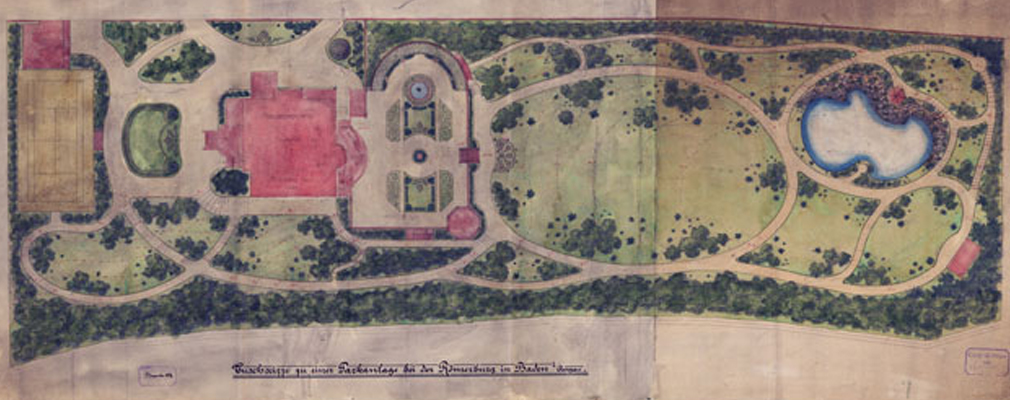Theodor (1810–1893) and Otto (1844–1906) Froebel belong to some of the most important Swiss garden designers of the 19th century and made a significant contribution to the emergence of Swiss landscape architecture in the 19th and 20th centuries

nurturing children to be inquisitive and open to the world
Theodor (1810–1893) and Otto (1844–1906) Froebel belong to some of the most important Swiss garden designers of the 19th century and made a significant contribution to the emergence of Swiss landscape architecture in the 19th and 20th centuries

The Franks took pride in having “fought against and thrown from their shoulders the heavy yoke of the Romans”.
The Franks integrated well into Roman society, speaking Latin fluently, obtaining Roman citizenship, and being often promoted by the emperors to consular ranks (including senators) for their competence.
During the transition from Antiquity to the Middle Ages, Frankish tribes were united under the Merovingian dynasty. The election of Pepin as King of the Franks by an assembly of Frankish nobles was followed by his anointing in 751 at Soissons by Boniface, archbishop of Mainz. Pope Stephen II travelled to Paris to anoint Pepin and his sons in the Basilica of St Denis in 754.
The Frankish tradition was to divide land between the male heirs. After Charlemagne died in 814, his empire was repeatedly divided among his descendants.
Charles the Bald inherited Western Francia, which would become known simply as France. Louis the German received East Francia, making up most of present day Germany. Lothair kept the title of emperor (which is indivisible) and Middle Francia which included the Frankish homeland and Imperial capital of Aachen.
The Franks are thought to have derived from Denmark or Schleswig-Holstein in the Early Iron Age (c. 500 BCE) and settled as far as the Rhine, circa 200 BCE. Around the 2nd and 3rd century C.E. they crossed the Rhine moved into Toxandria and the Rhineland.
The Rhine and Moselle valleys in are known as “Franconia”, and dialects in this region are varieties of Franconian, direct descendants of Old Frankish. By the end of the 17th century the concept of Old Frankish, the ancestor language of Dutch, German, and the Frankish words in Old French had been firmly established.
In the sixteenth century, the ancient region of Thuringia, ruled by the Ernestine branch of the Saxon house of Wettin, split into several duchies (Saxe-Altenburg, Saxe-Eisenach, Saxe-Gotha, etc.), while the Albertine (electoral) section of Saxony with its capital Dresden remained intact as a political-geographical unit. Situated within the Ernestine duchies—in addition to the enclave of Erfurt and the free imperial city of Mühlhausen, two metropolitan areas—were several independent principalities ruled primarily by the counts of Schwarzburg (Arnstadt, Rudolstadt, and Sondershausen), Hohenlohe-Gleichen (Ohrdruf), and Reuss (Gera, Greiz). One of the most densely populated areas in Europe, dotted with countless small towns in a politically fractured landscape, Thuringia developed into an economically and culturally vigorous region soon after the catastrophic Thirty Years’ War ended in 1648. Some of the most important intersections of east-west and north-south continental trade routes made the area particularly susceptible to foreign influences—in art and architecture, most notably from Italian and French traditions. Here, as almost nowhere else to such an extent, the manifold European trends met and merged, generating a unique climate that also paved the way for the early eighteenth-century concept of a mixed style in music.
Upon the 1680 partition, the former Franconian lands of the extinct House of Henneberg fell to Ernest’s third son, Bernhard, who chose the town of Meiningen as his residence and thereby became the first Duke of Saxe-Meiningen. From 1682 Duke Bernhard I had the Schloss Elisabethenburg built and in 1690 established a court orchestra (Hofkapelle), whose later Kapellmeister was Johann Ludwig Bach.
In the reshuffle of Ernestine territories that occurred following the extinction of the Saxe-Gotha-Altenburg line in 1825, Duke Bernhard II of Saxe-Meiningen received the lands of the former Duchy of Saxe-Hildburghausen as well as the Saalfeld territory of the former Saxe-Coburg-Saalfeld duchy.
Before the Reformation the territory of the Duchy of Saxe-Meiningen had belonged to the Diocese of Würzburg.
In the 1866 Austro-Prussian War, Bernhard II supported Austria. Prussia therefore occupied his territory and had the government transferred to his son, George II (b. 1826).
Members of this family bear the title Prince or Princess of Saxe-Meiningen, Duke or Duchess of Saxony together with the formal appellation of His or Her Highness.
via Official Website of the Almanach de Saxe Gotha
Johannes Froebel-Parker is a direct descendant of a brother of Friedrich Froebel, the world renowned educator and founder of the first kindergarten. He lives in New York in the USA. Froebel-Parker follows a centuries-long tradition of Froebel’s nephews and nieces, dedicated to the philosophy of their uncle and his approach to education. Grandparents, great-aunts and great-grandmother of the author left him the legacy of a vibrant oral tradition about Friedrich and his family.
Friedrich’s nephew Theodore,(Theodor in German) and his son, Otto belong to the cultural history of Zurich (Switzerland) to this day. The Rieterpark in Zurich with its beautifully designed paths is part of their legacy. One of their plant hybrids, the Froebel Spirea or Froebel Plant is known throughout Europe and North America.
One thrives in front of the parsonage in Oberweissbach, where Friedrich Froebel was born. Continue reading “Froebel Spirea in Oberweissbach”
Family Tree located in the Oberweissbach parsonage, where Friedrich Froebel was born.

Johann August Gotthelf Froebel was the oldest brother of Friedrich
Known as August, he was born on 3 Jan 1766 at Elxleben in the Principality Schwarzburg Rudolstadt and died between 1792 and 1796 at Arnstadt in Thuringia.